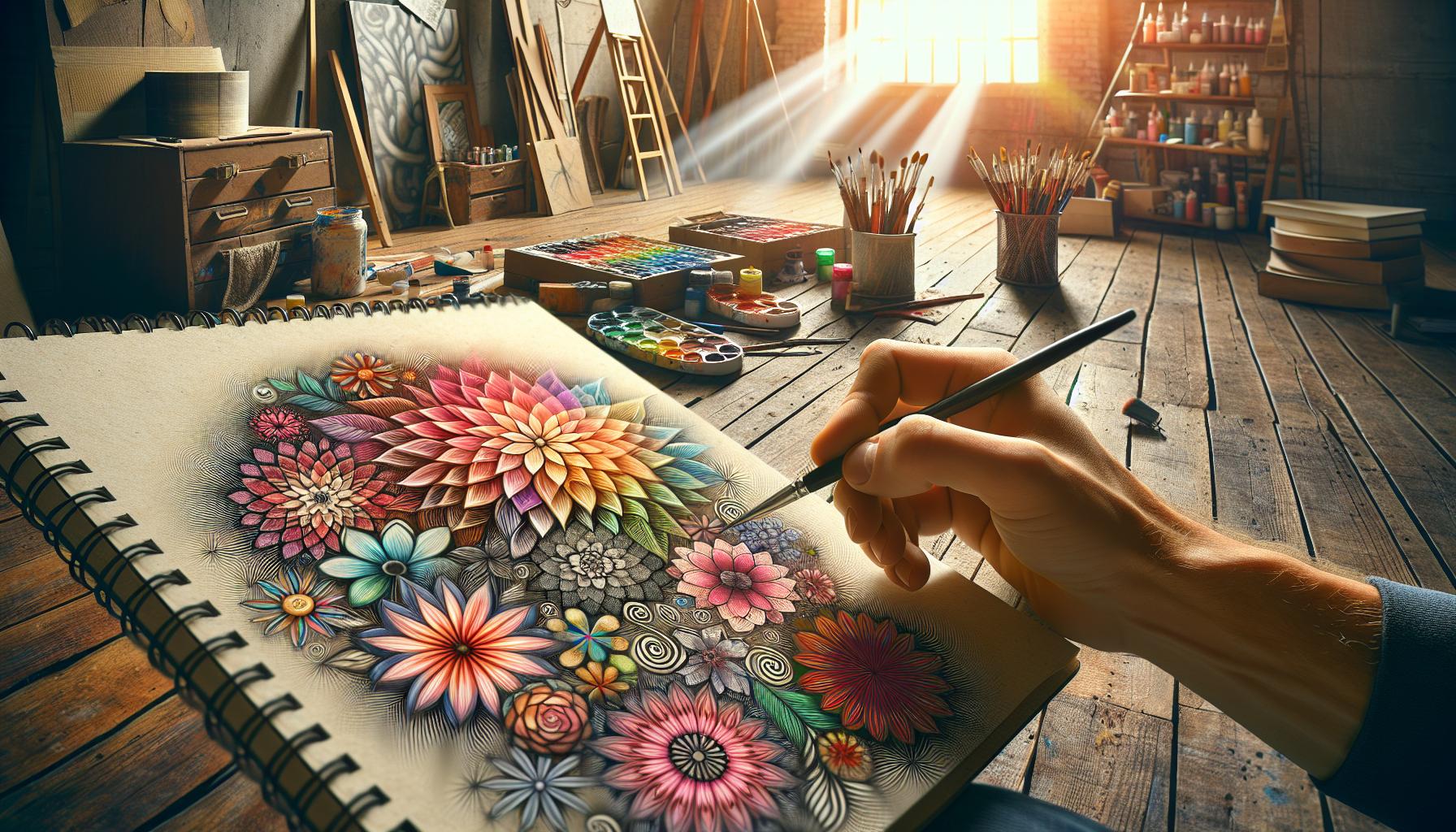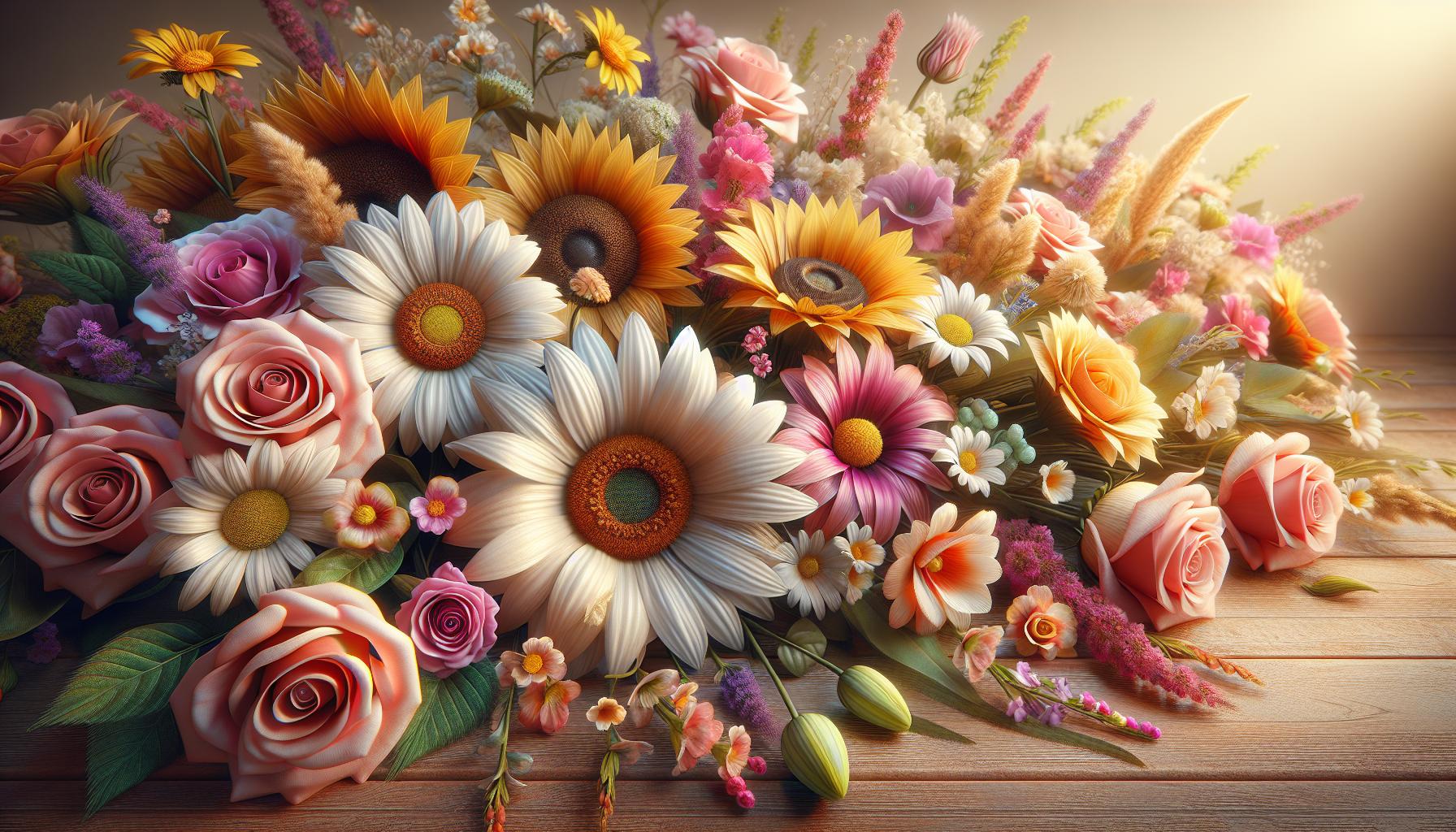Drawing flowers doesn’t have to be a thorny challenge. Whether you’re a budding artist or simply looking to add some floral flair to your sketchbook, mastering simple flower drawings can be as easy as watching a garden grow.
From delicate daisies to robust roses, there’s something magical about capturing nature’s beauty on paper. The art of drawing flowers not only helps develop artistic skills but also provides a calming creative outlet that anyone can enjoy. With just a few basic shapes and lines, even complete beginners can create stunning floral artwork that’s sure to make their creativity bloom.
Facil:dzh8zgpi6fy= Flor Dibujo
Easy flower drawing techniques start with mastering fundamental elements and using the right tools. These core principles enable artists to create beautiful floral artwork with confidence.
Basic Shapes and Lines
Simple geometric shapes form the foundation of flower drawing. Circles create flower centers, while ovals shape petals in various sizes. Basic straight lines transform into stems, while curved lines add natural movement to leaves and petals. Triangle shapes produce sharp leaf tips and petal points. Combining these shapes creates multiple flower types:
- Daisies: Central circle plus oval petals
- Tulips: Teardrop shape with curved lines
- Sunflowers: Large circle center with elongated oval petals
- Roses: Spiral lines from center outward
- Lilies: Diamond shapes with pointed tips
Essential Drawing Materials
Quality materials enhance the flower drawing experience. A selection of drawing tools provides versatility for different techniques:
- Graphite pencils (HB, 2B, 4B) for initial sketches outlines
- Fine-point markers (0.3mm 0.5mm 0.8mm) for defined lines
- Drawing paper (90lb weight) with smooth texture
- Kneaded eraser for highlight creation
- Blending stumps for shadow effects
- Colored pencils (12-set minimum) for adding vibrancy
- Drawing compass for perfect circles
- Ruler for straight stems measurements
Each tool serves specific purposes in flower drawing creation while maintaining simplicity in approach.
Step-by-Step Flower Drawing Guide

Creating beautiful flower drawings follows a structured approach that builds from basic shapes to detailed artwork. The following steps break down the process into manageable segments for artists of all skill levels.
Starting With Simple Petals
Basic petal shapes create the foundation for realistic flower drawings. A circle in the center serves as the starting point for most flower varieties. Five to eight evenly spaced lines radiating from the center establish petal placement guidelines. Drawing symmetrical oval shapes around these guidelines forms basic petals. Simple flowers like daisies start with round petals, while tulips use pointed oval shapes. The initial petal layer creates a base template for building more complex flowers.
Adding Details and Texture
Texture transforms basic flower outlines into lifelike botanical drawings. Light pencil strokes along petal edges create natural curves and waves. Small lines drawn from the center outward add vein patterns to each petal. Shading techniques bring depth by darkening petal bases and adding gradual transitions toward petal tips. Stippling dots create texture in flower centers, particularly effective for sunflowers and black-eyed susans. Cross-hatching patterns add shadows beneath overlapping petals for dimensional effects.
Popular Flower Types to Draw

Simple flowers create an ideal starting point for artists to develop their drawing skills. These common varieties offer distinct shapes patterns that translate well to paper.
Daisies and Sunflowers
Daisies present perfect symmetry with their round centers surrounded by evenly spaced petals. The center consists of small circular patterns while each petal maintains uniform width from base to tip. Sunflowers feature similar geometric principles with their prominent spiral seed patterns radiating from the center. Their large petals demonstrate a slight curl at the edges adding depth to the drawing. Artists start with light circular guidelines to map out proper proportions before adding defining details like texture lines in the center disk pattern.
Roses and Tulips
Roses showcase overlapping curved petals that spiral outward from a central point. Each petal layer reveals gradually increasing sizes moving from tight inner curves to broader outer petals. The characteristic folds create natural shadows enhancing dimensional effects. Tulips display simpler forms with elongated cup-shaped blooms composed of 6 distinct petals. Their stems maintain gentle curves while leaves wrap around the base in flowing lines. The smooth petal surfaces require minimal detail work focusing instead on capturing graceful contours through clean outlines.
Shading and Coloring Methods

Shading and coloring transform simple flower drawings into vibrant, dimensional artwork. Different techniques and tools create unique visual effects that enhance the overall artistic impact.
Using Pencils and Markers
Graphite pencils produce varied tonal values through controlled pressure application. Light strokes build subtle shadows in flower petals while firm pressure creates deep contrasts in flower centers. Colored pencils layer smoothly to create rich hues, starting with light colors and gradually adding darker shades. Fine-point markers add bold outlines and precise details to define petal edges, stem structures and leaf veins. Watercolor markers blend seamlessly for soft color transitions, particularly effective for creating gradient effects in rose petals or sunflower centers. Artists combine these tools strategically – using pencils for initial sketching, markers for defined lines and colored implements for final touches.
Digital Drawing Tools
Digital tablets unlock extensive shading and coloring capabilities for flower illustrations. Pressure-sensitive styluses replicate traditional art tools through customizable brush settings, opacity levels and color palettes. Drawing apps feature specialized brushes for creating realistic textures like petal surfaces, leaf patterns and stem details. Layer functions enable artists to separate elements for precise editing and color adjustments. Digital color wheels provide unlimited palette options while blend modes create authentic lighting effects. Cloud storage preserves artwork progress while allowing artists to work across multiple devices. Popular drawing applications include Procreate, Adobe Fresco and Clip Studio Paint, each offering unique features for botanical illustration.
Tips for Improving Your Flower Art
Regular practice with simple flower sketches strengthens fundamental drawing skills. Artists develop muscle memory by repeating basic petal shapes 15-20 times per practice session.
Light pencil strokes create delicate outlines before adding detailed elements. Starting with a 2H pencil allows for easy corrections while maintaining clean lines.
Here are essential techniques to enhance flower drawings:
- Observe real flowers or reference photos to understand natural petal arrangements
- Study light patterns across petals to create accurate shadows
- Sketch loose guidelines using basic shapes before adding details
- Focus on one petal group at a time while maintaining proportion
- Add texture through varied line weights using different pencil grades
Incorporating these drawing elements elevates floral artwork:
- Negative space between petals creates depth
- Varied line thickness adds visual interest
- Strategic shading enhances dimension
- Subtle color gradients build realism
- Organic imperfections capture natural beauty
| Drawing Element | Purpose | Application |
|---|---|---|
| Line Weight | Creates depth | 0.3mm-0.8mm variation |
| Shading | Adds dimension | 3-5 tonal values |
| Color | Builds realism | 2-3 hue transitions |
| Texture | Shows detail | 1-2mm mark spacing |
Digital tools enable additional enhancement options:
- Layered drawing techniques for complex compositions
- Custom brush settings for unique textures
- Digital color palettes for precise matching
- Pressure sensitivity for natural line variation
- Multiple undos for risk-free experimentation
Artist communities provide valuable feedback through social platforms like Instagram or DeviantArt. Sharing work regularly generates constructive critique from experienced artists.
Drawing flowers offers an accessible and rewarding path into the world of artistic expression. With basic shapes fundamental techniques and the right tools anyone can create beautiful floral artwork. Whether using traditional materials or exploring digital platforms artists will find their unique style through consistent practice and experimentation.
The journey of flower drawing becomes more enjoyable as skills develop bringing satisfaction with each completed piece. Artists can start with simple daisies and progress to complex roses while building confidence along the way. The combination of proper techniques quality materials and regular practice opens endless possibilities for creating stunning botanical illustrations that capture nature’s beauty.



